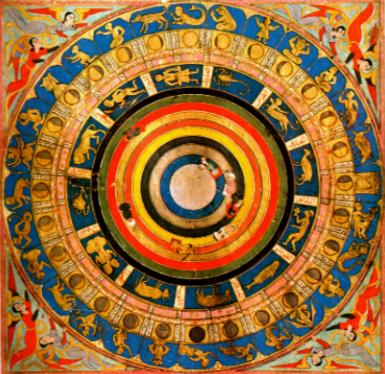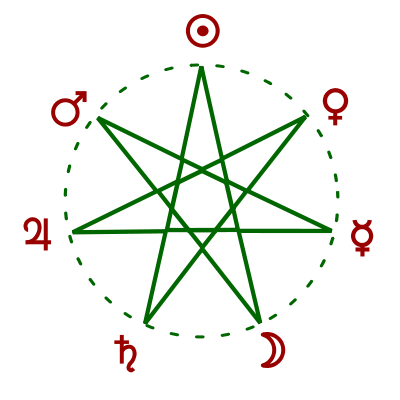Any good ritual will have three parts to it, a beginning or Ingress (the preparation), a middle where the congregants, corporeal and otherwise, also called Congress, and the ending wherein the rite is made final and closed, called Egress. This is the pattern that I follow when constructing rituals. Here is a simple one to be performed this weekend, best if done tonight during the penumbral eclipse (for residents of North America).
For this rite you will need the following:
• A ritual tool such as knife or wand
• Three pinches of sea salt in water for asperging
• Natural, botanical based incense on charcoal
• A chalice of wine, beer, liquor, or natural fruit juice
• A paton of bread, cakes, or cookies (gluten-free counts! • But no processed prepackaged junk!)
• A piece of paper for a petition spell, or optionally a length of twine or string for knot magic
• An altar decorated with Lunar symbolism or how you like it
Ingress:
Purify space by asperging and censing
Cast the Circle
Conjure the Quarters
Congress:
Prayer to Selene for any Spell
Spellcraft
Communion
Egress:
Thanksgiving
Open Quarters
Close Circle
Mix the salt and water, say:
“Creature of the Marriage of Earth and Water, bless and purify this space.”
Place a scoop of incense on the glowing hot coal:
“Creature of the Marriage of Fire and Air, bless and protect this space.”
Taking ritual tool in hand, walk clockwise in a circle three times around the area while chanting:
“Thrice around the Witches’ Wheel,
We tread the bounds from toe to heal,
From solid land to starry sky
To Underground where Mighty Dead lie,
With this chant inside we seal
The magic of the Witches’ Wheel.”
Then, turn to face the Eastern Quarter:
“From the East we conjure the Spirits of Hotness and Fire, to sanctify this space and join in our rites.”
To the South:
“From the South we conjure the Spirits of Wetness and
Air, to sanctify this space and join in our rites.”
To the West:
“From the West we conjure the Spirits of Coldness and Water, to sanctify this space and join in our rites.”
To the North:
“From the North we conjure the Spirits of Dryness and Earth, to sanctify this space and join in our rites.”
Standing in the Center:
“The Four Quarters of the World United, the Circumference becomes the Center, and the Center the Circumference.”
Then, looking towards the physical Moon if possible, or holding Her form in your imagination, recite the ancient Prayer to Selene:
Prayer to Selene for any spell (PGM IV 2785-2890)
Come to me, o beloved mistress, three-faced Selene;
kindly hear my sacred chants;
Night’s ornament, Youthful One, Light Bringer to mortals,
O child of morn who rides upon fierce bulls,
Queen who drives your chariot on equal course with Helios,
You dance with the triple forms of the triple Graces
As you revel with the stars.
You are justice and the threads of Fate:
Klotho and Lachesis and Atropos
Three-headed, you are Tisiphone, Megaira, Alekto, many-formed,
who arm your hands with dreaded, murky lamps,
who shake locks of fearful serpents on your brow,
whose mouths sound the roar of bulls,
whose womb Is decked with the scales of creeping things,
With pois’nous rows of serpents down your back,
Bound down with horrifying chains
Night-crier, bull-faced, loving solitude,
Bull-headed, you have eyes of bulls, the voice of dogs;
you hide your forms in shanks of lions,
Your ankle is wolf-shaped,
fierce dogs are dear to you, wherefore they call you Hekate,
Many-named, Mene, cleaving air just like Dart-shooter Artemis, Persephone,
Shooter of deer, night shining, triple-sounding,
Triple-headed, triple-voiced Selene
Triple-pointed, triple-faced, triple-necked, And goddess of the triple ways,
who hold Untiring flaming fire in triple baskets,
you who oft frequent the triple way
And rule the triple decades, unto me who is calling you
be gracious and with kindness give heed,
you who protect the spacious world at night,
before whom daimons quake in fear
And gods immortal tremble, goddess who Exalt men,
you of many names, who bear fair offspring, bull-eyed, horned,
mother of gods and men, and nature, mother of all things,
For you frequent Olympos, and traverse the broad, boundless chasm.
Beginning and end are you, and you alone rule all.
For all things are from you, and in you, Eternal One,
do all things come to their end.
Spellcraft:
This is largely up to the individual. I recommend prefer writing out a petition and burning or burying it. Or you can try knot magic, evoking your wishes in your imagination and binding them to reality by tying 3, 6, or 9 knots in it.
Communion:
Take up your ritual tool and the chalice, say:
“This, the Blood of the Moon, I sanctify in order that it may vivify and bless our bodies and spirits.”
Do the same with the paton:
“This, the Flesh of the Sun, I sanctify in order that it may nourish and bless us.”
Sprinkle a little wine out onto the cakes.
The wine and cakes are passed around the circle, each person taking a drink and a bite and sincerely offering the communion to the next person with the words “May you never hunger, May you never thirst.”
At this point the circle may be kept open and a dance or game may be performed. But, it is best to close it and thank the spirits in attendance.
Simply return to the Northern Quarter and, walking counterclockwise, return to each quarter and say:
“Spirits of (this direction) we give thanksgiving to your presence and power, go now and let there be everlasting peace between us.”
Then, continue to walk counterclockwise around the circle three times. As you walk imagine the magic of the circle dissolving back into reality.
Take the remnants of the communion cakes and wine, go outside and look towards the Moon. Dig a shallow hole and pour the remnants in it as a cthonic offering.
This rite is done. So Mote It Be.










